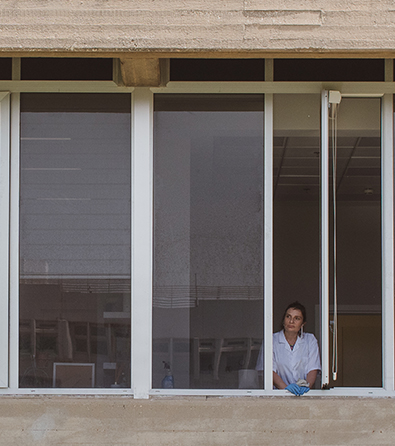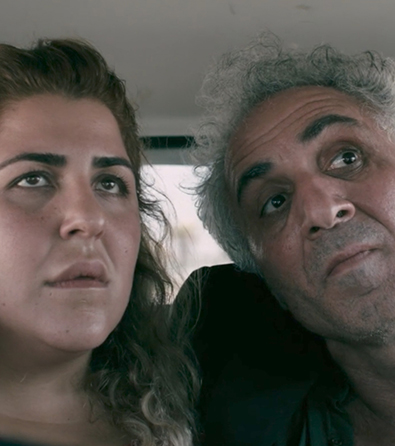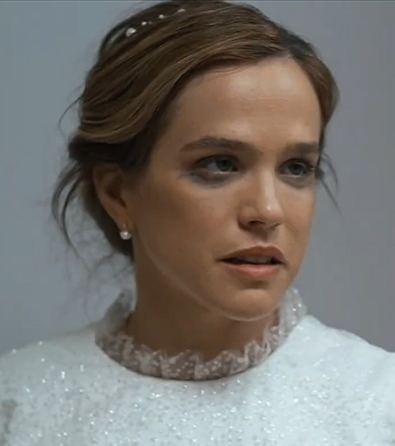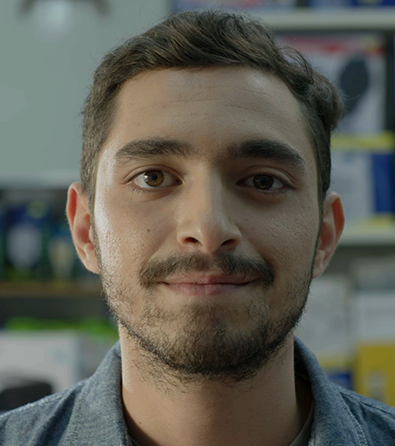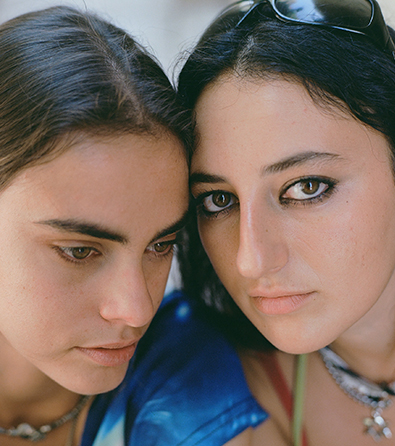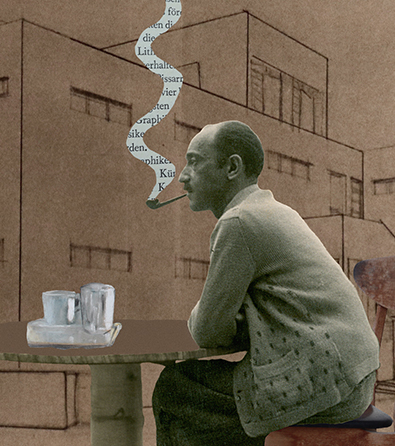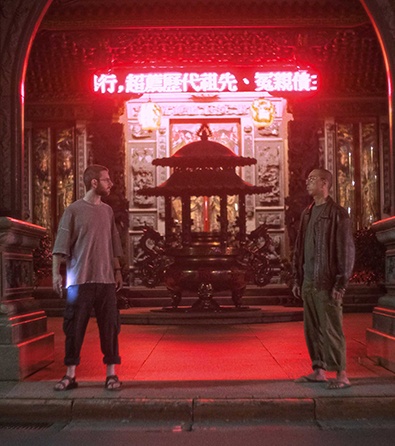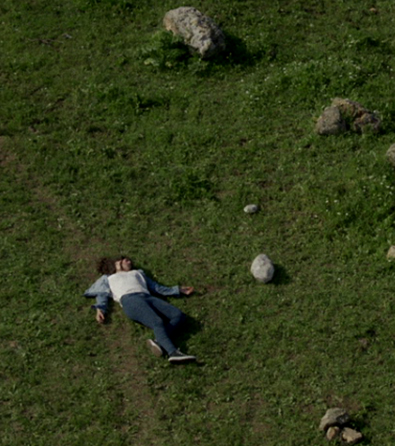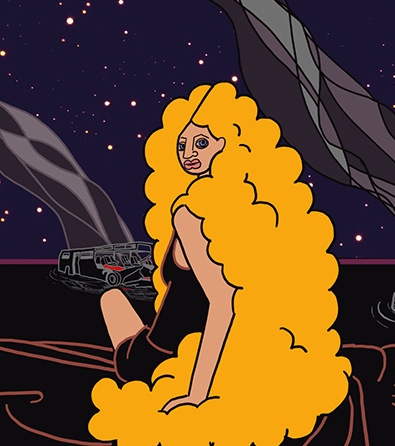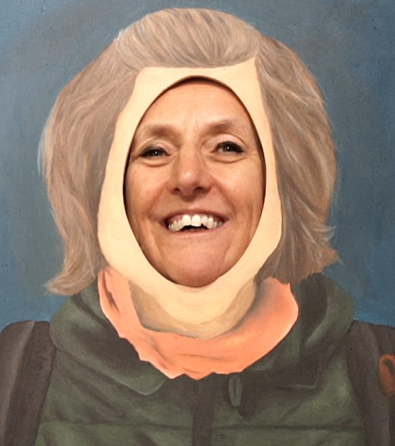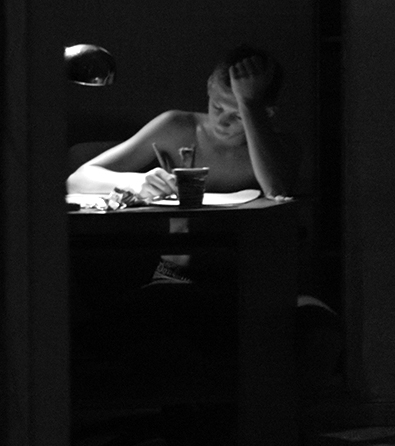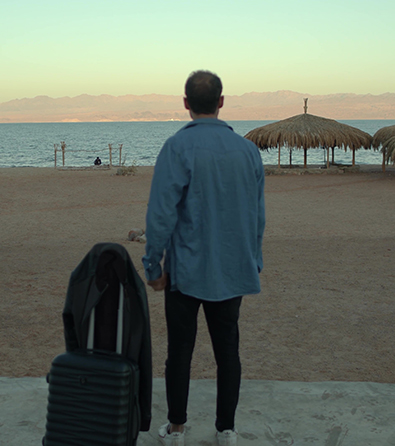The short animation film We Were A Sterile Bomb (15:30 minutes) is available at the top of the page.
* To watch this film, please approve YouTube/Vimeo cookies via the blue cookie icon at the bottom left of the screen
Dotan Moreno’s creative work as an animator serves as a captivating and insightful dialogue between the textual domain of literature and poetry and the visual sphere of culture and animation. Over the past decade, the poetry-film genre – brought to life in spoken word videos and animated graphic literature – has experienced rises, falls, and technological advancements.
The ability of AI to convert words into images has sparked debates about the tension between personal interpretation and corporately designed imagery. The enchantment of verbal texts lies in the individual pictures and private images they conjure within the reader’s mind. This is why the fixation of the visual process in AI often reduces the textual source to a single icon, with individual words and entire poems swiftly transformed into images and videos, bypassing human intervention.
In the era of artificial intelligence, differences in syntax, combinations, intonation, and lexicon among languages seem less critical. Nevertheless, at this stage, these differences lack unique visual representation and translation unique to each language. As for colors, in the evolved form of AI, they merely appear as subdued tones reflecting the mood of the image.
Dotan Moreno’s work confronts the contemporary technological tendency that standardizes the relationship between text and image. His film We Were A Sterile Bomb is based on a poem by Israel Dadon, which begins as follows:
We were a sterile bomb
In the tassels of the sky
Pain was dwelling deep
We were someone
Random marked
Stripped innocent
In the streets of Kiryat Gat
* The film “We Were A Sterile Bomb” is available for viewing at the top of this page.
The first line, rich in contrasts, employs the collective plural, yet simultaneously signifies the dispersion of this collective – with some aloft in the sky, and some rooted to the earth. The second stanza narrates the past “we” as a singular entity. From the onset of the film, the tension between the communal and the individual becomes evident: the protagonist, an employee at a gas station, falls for a man who passes by the station on a moped.
Moreno’s script outlines a series of three encounters – both physical and emotional: the first unfolds on a soccer field, the second in a synagogue, and the third at home during the initial physical connection between the two characters.
The animated design enthralls through its portrayal of the film’s protagonists amidst the landscape of an Israeli town and its aged structures, engendering a persistent tension between the characters and the harsh Israeli urban environment they inhabit. The animation mirrors the disconnection between the public domain and the inner emotional world of the characters.
The film features no text or dialogue except for the hymns heard during the Shabbat prayer in the synagogue. These hymns are not traditional Siddur prayers, but lines drawn from Dadon’s poem. Only the words from the poem’s opening stanza are discernible in the men’s hymns. The intonation and music of the congregation resonate as a lost language, a migration whose journey is yet to conclude. The textual silence in response to the film’s happenings complements the relationship between the lyrics and the cinematic scenes. The film does not render the poem literally, but conveys the feelings and emotional process it encapsulates onto the screen. The voices of the individual and the community reverberate distantly, like a ticking bomb, even when not a single word is uttered.
We were workmen
Plowing
Barbed wire fences
As if they were honey
On the lips of a paycheck
As we cast at our mother
A raised sun
Between closed shutters
And we were not
Were not at all
When the great pioneers were
We were not great
And we were not a man
The film’s protagonist attends the synagogue with his father on the eve of Shabbat while his mother watches a movie in Arabic on TV. The dialogue in the Arabic film includes a brief exchange between a mother and daughter, as the daughter prepares for bed. The daughter requests a lullaby, and the mother obliges with a song of affection. These words of maternal love in Arabic starkly contrast the silence and familial detachment existing within the house, a distance not borne out of estrangement but a collective pain and the memory of a world that once was but no longer is.
The film We Were A Sterile Bomb subverts the conventional cinematic narrative that impels action and the vitality of motion animation. The silence and the static scenes from everyday life in an Israeli town become metonymic expressions of an identity that surfaces through the sounds of silence and the whispering noise. The film’s protagonists endeavour to reclaim the words that have been silenced or taken from them. The editing of the film, which alternates between the main character’s personal viewpoint and his role in Israeli life, even as he remains silent throughout the film, transforms each cut into a device for crafting delicate human moments and fleeting instances of discovery and kindness among people.
The tension between the absence of words in film dialogues and the visual imagery in animation poses socio-political and aesthetic queries. The animated world appears doubly removed from the viewer’s reality: firstly, through the medium of animation itself, and secondly, through the stillness of the language. The lack of dialogue renders the language that does exist within the film absent. Conversely, the absence of language faithfully reflects the lyrics of the poem upon which the film was based.
The relationship between cinematic narrative and the representation of language and words from literature and poetry has been extensively explored in cinema, particularly in biographical portrayals of writers, poets, directors, and creators of all genders. Emily Dickinson, Virginia Woolf, James Baldwin, and Siegfried Sassoon are among the numerous figures who have been portrayed in biographical cinema. This genre often grapples with the depiction of literature and poetry on screen. For instance, the balance between imagination and reality was depicted in Jean Cocteau’s “Orpheus” (1950); the struggle of writing by the director Guido, played by Marcello Mastroianni in Fellini’s “8 ½” (1963), and the psychological state of the poet Sayat Nova was explored in Sergey Parajanov’s “The Color of Pomegranates” (1969). These films primarily focus on the poet or creator’s perspective on the reality they inhabit.
We Were A Sterile Bomb adapts Israel Dadon’s song to the screen in Moreno’s distinct style. The film contains virtually no text, barring a few words, but instead, it presents a biographical, personal, collective world, and a social reality that the viewer should attentively listen to and keenly observe. Precisely through vision and silence, the film artfully translates all the stanzas of the poem into cinema. Moreno reveals his characters to us, shouting amidst the silence.
The short animation film We Were A Sterile Bomb is available to watch at the top of the page.
